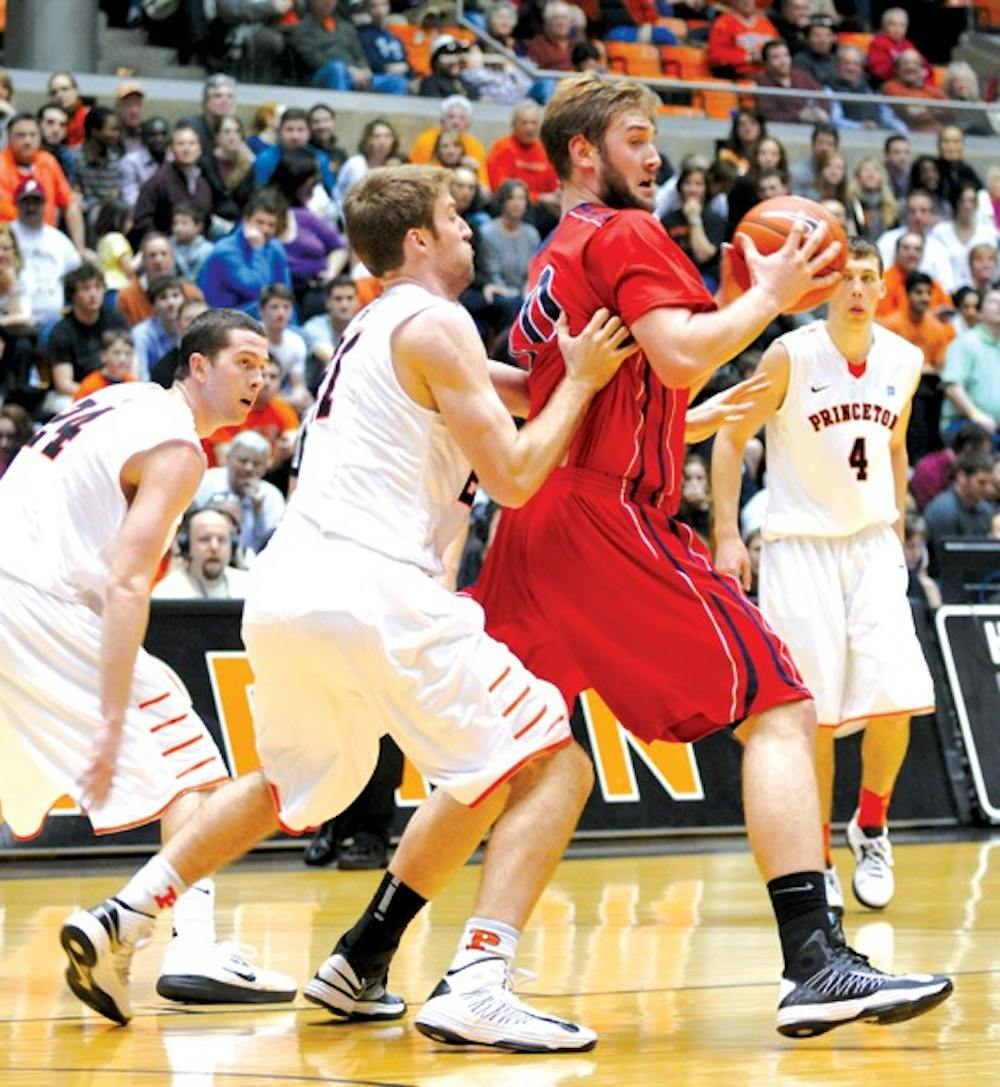With college basketball season less than two weeks away, the time has arrived for curmudgeon sportswriters to do what they do best: analyze the numbers.
Through taking a look at the relative sizes of players at each position in the Ivy League, the game takes on a whole new dimension.
Guards
Height: Looking at the backcourt, Yale’s 10 guards top the Ivies with an average height of 6-foot-5. Dartmouth’s backcourt scale in at the league’s smallest average of just 6-foot-0. Along with Cornell, Columbia and Harvard, Penn’s 11 guards stand at an average of 6-foot-2.
Weight: Penn’s guards are nearly the lightest in the Ivy League at an average of 172.7 pounds. Only Harvard — whose guards weigh just 163.1 pounds on average — is lighter in the backcourt. Yale’s towering guards are also the heaviest in the conference at an average of 194.5 pounds.
_
What can Penn learn from this?_ Penn’s backcourt appears to have enough height to hang with the rest of the Ivy League, but their relatively light weight may hinder the Quakers’ efforts defensively, especially against the taller and heavier guards of Princeton and Yale.
Forwards
Height: Moving on to the frontcourt, Penn, Yale, Cornell and Columbia’s forwards stand at 6-foot-8 on average. Princeton, Dartmouth, Harvard and Brown feature forwards averaging 6-foot-7.
Weight: Penn’s five forwards do not tip the scales in the team’s favor, weight-wise that is. The five average 215 pounds, which is fifth heaviest in the Ivy League. Again, Yale boasts the heftiest group with an average weight of 226 pounds. Harvard’s 10 forwards are not far behind at an average 224.5 pounds while Princeton’s 10 forwards will enter this season at a league-lightest 206.6 pounds.
SEE ALSO
Tydings | Will Tony Bagtas ‘run the team’ this year for Penn basketball?
Q & A with Penn basketball alum Mark Zoller
2013-14 Ivy Basketball Prospectus
What can Penn learn from this? Penn’s frontcourt appears to possess the height to battle on the boards and command the post. However, Penn’s forwards are more than 10 pounds lighter on average than the heaviest forwards in the conference. The difference in weight could spell difficulties for the Quakers on the glass and in scoring opportunities in the post.
Centers
Height: Rounding out the frontcourt, Penn’s centers stand in the middle of the conference with an average height of 6-foot-11. Princeton and Columbia feature the tallest centers in the league at 7-foot-0 on average. Brown and Harvard’s centers are the shortest in the league at 6-foot-9.
Weight: In terms of weight, Penn’s centers are by far the heaviest in the Ivy League, averaging 272.5 pounds. The next closest group of centers belongs to Columbia at a weight of 251.5 pounds. Princeton’s centers enter this season the lightest in the conference at just 227 pounds average.
What can Penn learn from this? In contrast to other positions, Penn’s centers may have the girth to outsize opposing centers, given that the Quaker centers average over 20 pounds more than the next heaviest group. Yet Penn’s centers are still average for the Ivy-League at 6-foot-10, and three other teams — Princeton, Cornell and Columbia — have taller centers to contend with the Quakers’ tandem.
One thing is certain: Penn basketball has enough size to play with the rest of the Ivy League. The team may be shorter in certain spots, but overall, the team is big enough and strong enough to contend against any other team in the conference.
The question now becomes: how will that height and weight play against Temple when Penn starts its season on Nov. 9?
SEE ALSO
Tydings | Will Tony Bagtas ‘run the team’ this year for Penn basketball?
Q & A with Penn basketball alum Mark Zoller
2013-14 Ivy Basketball Prospectus
Penn men’s basketball’s Red & Blue Scrimmage ends in laps
Penn basketball’s 2012-13 season in six-word recaps



